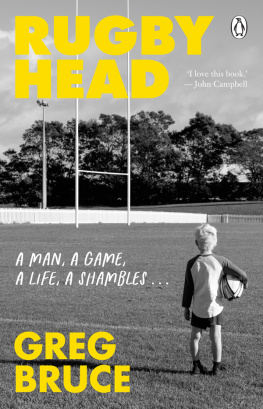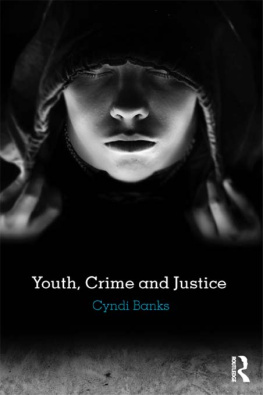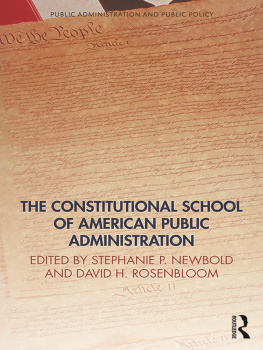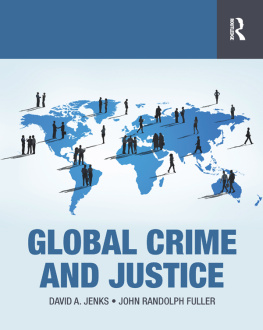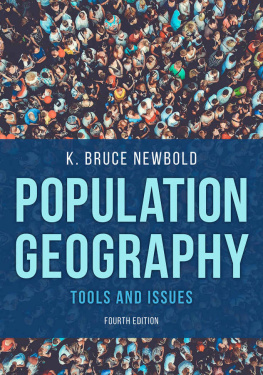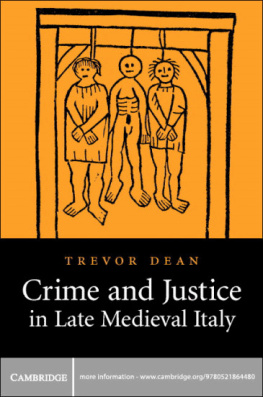CRIME, LAW AND JUSTICE
IN NEW ZEALAND
Crime, Law and Justice in New Zealand examines the recent crime trends and the social, political and legal changes in New Zealand from the middle of the twentieth century to the present. Serving as the only New Zealand-specific criminal justice text, this book takes a direct look at what is unique about the countrys criminal justice system and recent crime trends. Newbold explores the cause of these trends in New Zealand, where crime rates have been falling since they peaked in the early 1990s, through factors such as economy, ethnic composition, changing cultural trends, and legislative developments in policing and criminal justice. He unpacks various types of crime separately violent crime, property crime, drug crime, gang crime, organised crime, etc. and examines the complex factors affecting each, using illustrative examples from recent high-profile cases to provide readers with a comprehensive understanding of criminal justice in a one-of-a-kind environment.
Greg Newbold is a well-known and respected author and professor in New Zealand. He is currently a professor in the Department of Sociology at the University of Canterbury. He has recently served as the Department Chair and the Programme Coordinator. He has published several books and numerous research monographs, and has been a contributing author on many edited volumes. He received his PhD in sociology from the University of Auckland.
Many New Zealanders have their own theories on crime, its causes, and solutions, generally based on a limited understanding of the complexities of the topic. Greg Newbolds detailed research complements his innate personal knowledge of the criminal world, and provides the reader with material which can only improve the quality of debate on this fascinating subject.
Greg OConnor, President, New Zealand Police Association
CRIME, LAW AND JUSTICE IN NEW ZEALAND
Greg Newbold
For support material associated with Crime, Law and Justice in New Zealand, please go to www.routledge.com/products/9781138192416
First published 2016
by Routledge
711 Third Avenue, New York, NY 10017
and by Routledge
2 Park Square, Milton Park, Abingdon, Oxon OX14 4RN
Routledge is an imprint of the Taylor & Francis Group, an informa business
2016 Taylor & Francis
The right of Greg Newbold to be identified as author of this work has been asserted by him in accordance with sections 77 and 78 of the Copyright, Designs and Patents Act 1988.
All rights reserved. No part of this book may be reprinted or reproduced or utilized in any form or by any electronic, mechanical, or other means, now known or hereafter invented, including photocopying and recording, or in any information storage or retrieval system, without permission in writing from the publishers.
Trademark notice: Product or corporate names may be trademarks or registered trademarks, and are used only for identification and explanation without intent to infringe.
Library of Congress Cataloging in Publication Data
Names: Newbold, Greg, author.
Title: Crime, law, and justice in New Zealand / Greg Newbold.
Description: New York : Routlege, 2016. | Includes bibliographical references and index.
Identifiers: LCCN 2015047208| ISBN 9781138192409 (hardback:
alk. paper) | ISBN 9781138192416 (pbk.: alk. paper) | ISBN
9781315639963 (ebook: alk. paper)
Subjects: LCSH: Criminal justice, Administration of--New Zealand--History. | Crime--New Zealand--History.
Classification: LCC KUQ3411.N49 2016 | DDC 364.993--dc23
LC record available at http://lccn.loc.gov/2015047208
ISBN: 978-1-138-19240-9 (hbk)
ISBN: 978-1-138-19241-6 (pbk)
ISBN: 978-1-315-63996-3 (ebk)
Typeset in Bembo
by HWA Text and Data Management, London
CONTENTS
For some years now, Ive been thinking about this project. In 2007 I had a book published called The Problem of Prisons, which was a social history of New Zealand prison reform since 1840. The objective of The Problem of Prisons was to explain correctional developments over the past 160 years or so in terms of the social, political, legal, economic and administrative changes that have occurred in this country since the signing of the Treaty of Waitangi in 1840. It was the first book of its type ever written in New Zealand and contributed to our historical understanding of what has happened in corrections, and when and why. This was in fact a broadened version of my 1987 PhD thesis (Newbold 1986), which looked at these factors in relation to the maximum security prison.
Ive always believed the same thing needs to be done in relation to crime. Crime rates dont rise and fall on their own and, likewise, patterns of crime dont change independently of other things that occur in society. In his landmark book Suicide, first published in 1897, the great French sociologist Emile Durkheim showed that even the frequency of that most individualistic of acts suicide responds to social conditions (Durkheim 1951). One of Durkheims principal contributions to sociology was to demonstrate that no single social phenomenon or institution can be understood without reference to the other social components that make up society as a whole. So it is with crime. Crime rates rise and fall and forms of crime appear and disappear, not on their own but as a result of a complex matrix of factors: cultural, economic, political, social and legal. And of course, since crime itself is defined by law, an analysis of crime cannot properly be made without reference to law and the criminal justice system which enforces it.
So this is what the current book is about. Its objective is to look at crime rates and crime patterns in terms of the various factors that have borne upon it over the last 65 years. I do not look in any detail at the 19th century or at the first half of the 20th. This book focuses on the post-World War II period; in particular from the 1950s onward. The 1950s saw the beginning of dramatic changes in crime and criminal justice patterns: sharp rises in reported delinquency, the emergence of the first teenage gangs, and the restoration and abeyance of capital punishment among others. This was followed by the appearance of large-scale illegal drug use in the 1960s, 1970s and 1980s, the precipitous rises in various forms of violent offending, and the emergence of organised crime. Finally, since the 1990s we have seen falls in many types of reported offending, including property crime, drugs and violence, alongside rises in female offending. As we will see in the final chapter, these changes have had a little to do with crime control strategies and the criminal justice system, but law and order policies have seldom been determining. Other variables, complex and inter-related, have been more important.
This book follows these trends and makes a detailed analysis of what changes took place, when they occurred, and what contributed to them. This is important information for policy makers, for without an understanding of the determinants of past crime patterns, the needs of the future can never be estimated.
In compiling this analytical history, I have used many resources. I have been teaching and researching this type of criminology for the past 35 years and I have a fair knowledge, through prior research and through personal experience, of the impact that various factors have had on different areas of crime. I was born in 1951 and thus I lived through the 1950s and 1960s, and in the 1970s I became involved in drug use and the drug trade myself before being arrested for selling heroin and sent to prison for 7 years in 1975. So I have particular experience of this as well. Many of the criminal figures referred to in the text are people I know or knew personally.



